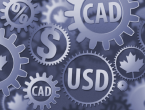Golden Weekly Review: Gold prices rebounded from a seven-and-a-half-week low and closed up, the market is facing three major worries
This week, spot gold hit a new low of 1721.40 US dollars per ounce since August 10, as the US dollar index refreshed its high since September 28, 2020 to 94.504, and recorded the largest increase of 0.85% since the week of June 18. The impact of the epidemic on the global economy has disrupted supply chains on all continents, leading to a series of shortages of goods and services around the world. The U.S. dollar is regarded as a safe-haven asset when the market is under pressure.
But as the U.S. dollar reduced its gains in the second half of the week, the price of gold rebounded sharply, covering all the declines, and the final trade closed up 0.62% to $1,760.84 per ounce. Market concerns about rising inflation, economic growth risks, and US debt defaults have overshadowed expectations that the Fed will raise interest rates soon.
Rising inflation expectations hit U.S. consumer confidence
The US consumer confidence index unexpectedly dropped to a seven-month low in September; US consumer confidence fell for the third consecutive month in September, indicating that concerns about delta strains and rising prices continue to suppress market sentiment. The data shows that the spread of the delta strain continues to weaken consumer expectations for the economy, affecting spending on the service industry. After the U.S. dollar rose sharply, there was a clear tone for consolidation. The falling U.S. dollar and falling bond yields supported gold prices, while investors re-positioned positions for the fourth quarter.
At the time when global growth is slowing, the time for the Fed to curtail its policy stimulus by the end of the year is approaching, and inflation is beginning to appear more difficult to control than initially expected. U.S. Treasury yields have soared recently. Some analysts said that the prospect of the Federal Reserve may still gradually reduce economic support this year will put pressure on gold prices. Reduced stimulus measures and rising interest rates tend to push up Treasury yields, thereby increasing the opportunity cost of holding gold.
The US 10-year Treasury bond yield climbed to 1.565%, the highest since late June, and the market expected the Fed to tighten monetary policy. The Fed announced last week that it may start reducing the scale of stimulus as early as November, and warned that with the withdrawal of the pandemic crisis policy, it may start raising interest rates earlier than expected.
Powell said that as the U.S. economy recovers from the epidemic, rising prices and recruitment difficulties may be "more lasting than expected," and the Fed will take action when necessary to deal with out-of-control inflation.
Capital Economics (Capital Economics) assistant economist Joseph Marlow wrote in a research report: "Even if the U.S. dollar falls further in the short term, we expect it to regain its recent gains in due course. Although most major The long-term bond yields of the economies have risen, but U.S. bond yields have risen more than most public bonds, and importantly, their rise is largely driven by rising real yields, which reflects the tightening of monetary policy. Expectations."
Fed Chairman Powell said that as the U.S. economy recovers from the epidemic, rising prices and recruitment difficulties may be "more lasting than expected," and the Fed will take action when necessary to deal with out-of-control inflation. This pushed the US 10-year Treasury bond yield to break through 1.54%, reaching its highest level since mid-June. It also led to higher market expectations for future inflation.
The Fed is expected to start reducing debt purchases in November
The Fed has stated that if the economy continues to develop according to current trends, it will begin to reduce the scale of bond purchases as early as November. The September employment report is now a potential trigger for the Fed's "scaling" action.
Fed Governor Brainard stated: "As far as I think further substantive progress is concerned, employment is still somewhat insufficient. But if progress continues as I hope, it may reach the standard soon."
New York Fed President Williams stated: "I think it is obvious that we have made further substantial progress in achieving our inflation target. We have also made very good progress in achieving maximum employment. Assuming that the economy continues to be as I expected. It may soon be justified to slow down the pace of asset purchases."
Chicago Fed President Evans stated: "I think the economy is close to reaching the standard of'further substantive progress' we set in December last year. This is the threshold for starting to reduce asset purchases. If the employment improvement trend continues, it seems likely. These conditions will be met soon, and reductions can begin."
Cleveland Federal Reserve Chairman Meester said that if the job market continues to improve as expected, the Fed should begin to reduce its support for the economy in November and may start raising interest rates before the end of next year.
Tom Di Galoma, managing director of Seaport Global Holdings, said that as Fed Chairman Powell implements the Fed’s plan, he expects that yields will continue to rise in the last three months of this year, especially for longer-term bond yields.
Mazen Issa, a senior foreign exchange strategist at TD Securities, wrote in a research report: "Although it is not surprising in itself to reduce the pace of asset purchases, the downside risk that ending the plan early will strengthen the US dollar has been reduced."
He added: "If there is any reference value in the last round of reduction cycle, it is that about half of the dollar's cyclical upward movement occurred three months after the reduction." TD Securities expects the Fed to be by June 2022. End the quantitative easing program.
FXStreet.com senior analyst Joseph Trevisani said: "We are in a situation where the U.S. dollar benefits from multiple ideas, but this is not common. The US economy does look better than most competitors... plus the Federal Reserve It seems to be finally ready."
Some officials believe that it has reached the standard of withdrawal
Some officials will pay attention to the September employment report released on October 8 to find the last piece of evidence that the recovery of the labor market has made "further substantial progress." Other officials believe that the standards have been met and are ready to start the process.
The chairman of the Kansas City Federal Reserve Bank of the United States, George, said that the US job market has reached the Fed's benchmark test of reducing the size of monthly bond purchases. The Fed should now turn to discussing the issue that its large number of bonds may complicate its final decision on when to raise interest rates. .
St. Louis Federal Reserve Chairman Brad said that the Fed should begin to reduce its balance sheet of about 8 trillion US dollars as soon as it ends its bond purchase plan next year, reminding the Fed that it may need more aggressive measures to deal with high inflation, including two interest rate hikes next year.
Atlanta Fed President Bostic said that sustained economic growth will push the United States to reach a level close to full employment by the end of 2022, and interest rate hikes can begin at that time, and the pace of faster interest rate hikes thereafter "will not be hindered."
Mazen Issa, senior currency strategist at TD Securities, wrote in the research report: "Just as the reduction in debt purchases is not a surprise in itself, the early termination of the quantitative easing program will further illustrate that the downside risk of the US dollar has weakened. If the debt cycle is used as a guide, about half of the dollar’s cyclical rise will occur after three months of reducing debt purchases.” The agency expects that the Fed will end its quantitative easing program by the end of June 2022.
David Meger, Director of Metals Trading at High Ridge Futures, said: "We still see some concerns, which are driving low-purchase buying. But we continue to see the dollar rise, and the commodity markets, especially gold, are still under some pressure."
OANDA analyst Craig Erlam said in a report: “As the downward momentum seems to slow down, gold prices may get some respite in the short term, but the overall outlook is not optimistic.”
Congress must avoid debt default
The U.S. Congress passed a provisional bill on Thursday to avoid a government shutdown, but as the House of Representatives prepares to vote on the $1 trillion infrastructure bill, President Biden’s agenda is facing another test.
The infrastructure bill was passed in the Senate last month and received strong support from the Republican Party. Moderate Democrats pointed out that the $3.5 trillion social expenditure plan is too high, and Democrats including Pelosi believe that the plan needs to be scaled down before it can be passed. But progressive Democrats threatened that unless moderates in the Senate and House of Representatives agree to a larger social spending plan, they will oppose the infrastructure bill.
U.S. Treasury Secretary Yellen once again warned members of Congress that the federal government’s borrowing capacity is nearly exhausted, and the current date for reaching the debt ceiling is October 18; she urged Congress to take action to avoid “serious damage” to the economy.
JPMorgan Chase CEO Jamie Dimon said on Tuesday that he has begun to prepare for the possibility of the United States hitting the debt ceiling, but he expects that policymakers will find a solution to avoid this potentially catastrophic event.
New York Fed President Williams warned on Monday that if the United States fails to resolve the debt ceiling issue, it may trigger a negative reaction in the market, but he also said that current market participants seem to believe that the debt ceiling issue will be resolved.
Marshall Gittler, head of investment research at BDSwiss, said in a report: "This may show people's confidence in the United States. Even if the US government drives toward a cliff like a car driven by a drunk driver being beaten by a drunk passenger, the dollar can strengthen. I presume this is because people have seen this script before and know the ending."
Kitco Metals senior analyst Jim Wyckoff said that the continuous appreciation of the U.S. dollar limits the upside of gold, but if the government does begin to shut down, it may boost gold because it has a safe-haven appeal. He added that gold entering the historically turbulent October may have better hedging demand.











